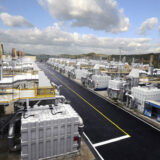
ExxonMobil reveals Scope 3 emissions data from upstream & downstream businesses
ExxonMobil Corp., one of the largest publicly traded international energy companies, has released for the first time Scope 3 emissions data from its upstream and downstream businesses in its report entitled “2021 Energy & Carbon Summary.” Scope 3 includes the indirect emissions resulting from the consumption and use of the company’s products. ExxonMobil plans to continue to report Scope 3 emissions data on an annual basis.
ExxonMobil estimated 630 and 740 million tonnes CO2-equivalent from its refining throughput and petroleum sales, respectively, as of December 31, 2019. From upstream production, ExxonMobil said its Scope 3 emissions totalled 570 million tonnes CO2-equivalent, of which 190 million tonnes comes from natural gas production and 380 million tonnes from crude oil production.
ExxonMobil has publicly reported the company’s Scope 1 and Scope 2 greenhouse gas emissions data for many years. The 2025 emission reduction plans are based on Scope 1 and Scope 2 emissions and are projected to be consistent with the goals of the Paris Agreement.
Reporting Scope 1 emissions data (direct greenhouse gas emissions from company operations) provides useful insight into the efficiency and emission-reduction performance of the company’s operations, portfolio of products, business sectors served and resource type.
Reporting Scope 2 emissions data (indirect greenhouse gas emissions from energy purchased by the company) highlights the company’s choice of energy sources, primarily purchases of electricity to power its operations.
ExxonMobil said it plans further reductions in greenhouse gas emissions over the next five years to support the goals of the Paris Agreement and anticipates meeting year-end 2020 reductions.
Greenhouse gas plans consistent with goals of Paris Agreement:
- Sets 2025 greenhouse gas emission reduction plan: intensity of upstream emissions to drop by 15-20%; methane intensity by 40-50%; flaring intensity by 35-45%
- Aims for industry-leading greenhouse gas performance across its businesses by 2030
- Plans to eliminate routine flaring by 2030; provide Scope 3 emissions beginning in 2021
- Anticipates meeting 2020 methane and flaring reductions
ExxonMobil plans to reduce the intensity of operated upstream greenhouse gas emissions by 15 to 20% by 2025, compared to 2016 levels. This will be supported by a 40 to 50% decrease in methane intensity, and a 35 to 45 % decrease in flaring intensity across its global operations. The emission reduction plans, which cover Scope 1 and Scope 2 emissions from operated assets, are projected to be consistent with the goals of the Paris Agreement. The company also plans to align with the World Bank’s initiative to eliminate routine flaring by 2030.
“These meaningful near-term emission reductions result from our ongoing business planning process as we work towards industry-leading greenhouse gas performance across all our business lines,” said Darren Woods, chairman and chief executive officer of Exxon Mobil Corporation. “We respect and support society’s ambition to achieve net zero emissions by 2050, and continue to advocate for policies that promote cost-effective, market-based solutions to address the risks of climate change.”
ExxonMobil’s plans will leverage the continued application of operational efficiencies, and ongoing development and deployment of lower-emission technologies.
The plan is the result of several months of detailed analysis and includes input from shareholders.
Other measures include:
- Continued investments in lower-emission technologies, such as carbon capture, manufacturing efficiencies, and advanced biofuels
- Increased cogeneration capacity at manufacturing facilities
- Continued support for sound policies that put a price on carbon
- Continued accounting for environmental performance as part of executive compensation.
Since 2000, the company has invested more than USD10 billion researching, developing and deploying lower-emission technologies, including nearly USD3 billion at cogeneration facilities that more efficiently produce electricity and reduce related emissions.












